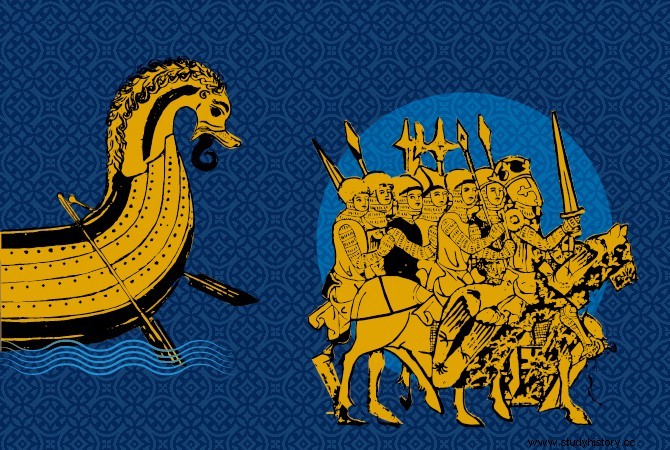
La Reconquista is the ambition to return the Iberian Peninsula to those who consider themselves its rightful owners. The Kingdom of Asturias quickly took first place in these battles. Burgos was founded in 884, Salamanca taken over in 941. The big deal was the rise of Castile. A condottiere symbolizes the dynamism of the warriors of the Christian Reconquest:Rodrigue Díaz, born around 1043, better known as the Cid. The King of Castile drives him out of the kingdom. Rodrigue then offered his services to the Moorish Emir of Zaragoza. In 1089, he undertook expeditions in the Levant on his own account. After 1140, a juggler composed a song to his glory, the Poème du Cid , the first monument of Castilian literature.
A true spirit of crusade
At the end of the XI th century and at the beginning of the 12 th century, two victories bear witness to the vitality of the two main Christian states of the time, Castile under Alfonso VI and Aragon under Alfonso I st the Battler:the capture of Toledo in 1085, followed by that of Zaragoza in 1118. The Tagus now marks the southern limit which separates Christians from Muslim domains.
These victories had been facilitated by the dismemberment of the Caliphate of Cordoba in 1031. The small Moorish states then appealed to the Almoravids of Morocco, who reunited Muslim Spain, but their power collapsed after fifty years. The Almohades take over and set up their capital in Seville. It was then that a true spirit of crusade appeared in the peninsula. Castile, Aragon, Navarre and Portugal join forces. In 1212, their armies crushed the Almohads in the heart of the Sierra Morena, in Las Navas de Tolosa.
In the middle of the 13 th century, of the ancient power of Al-Andalus there remains only the small emirate of Grenade. The Reconquest then marked a long pause, until in 1482 the Catholic Monarchs decided to eliminate what remained of Islam in Spain.
